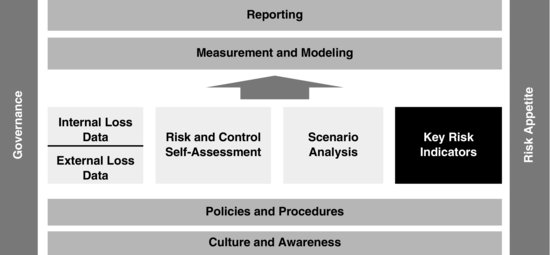CHAPTER 9
Business Environment Internal Control Factors: Key Risk Indicators
This chapter explores the benefits and challenges of the use of metrics in the operational risk (OR) framework. Metrics can provide the business environment and internal control factors (BEICF) needed for an AMA capital approach, but perhaps more important, they can provide insight into the changing operational risk environment.
KEY RISK INDICATORS
Key risk indicators, or KRIs, are used in the operational risk framework to keep a finger on the pulse of the changing risk environment. External risk factors, internal risk factors, and the control environment can be monitored using metrics.
In Basel II, there is a requirement for AMA banks to collect BEICF for use in the capital model. These BEICF have proved elusive and capital models have struggled with how to incorporate them. The use of BEICF in capital modeling is discussed later in Chapter 12.
However, it is common sense that monitoring our environment and our controls will lead to better operational risk management, regardless of their use in the capital model and all firms attempt to develop a key risk indicator (KRI) structure of some kind. Some are highly sophisticated, some are simple.
KRIs are an important pillar in the operational risk framework as illustrated in Figure 9.1.
FIGURE 9.1 Key Risk Indicators in the Operational Risk Framework

Get Operational Risk Management: A Complete Guide to a Successful Operational Risk Framework now with the O’Reilly learning platform.
O’Reilly members experience books, live events, courses curated by job role, and more from O’Reilly and nearly 200 top publishers.

